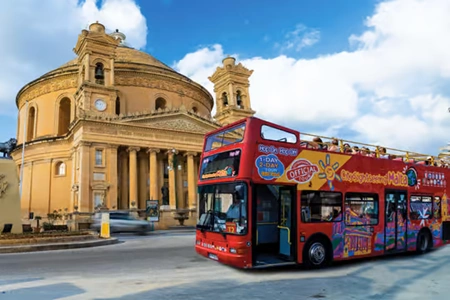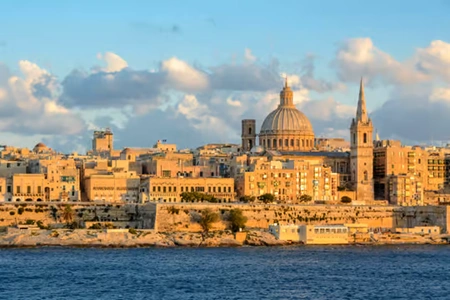Chinese Garden of Serenity
Since ancient times, Chinese gardens have symbolized various philosophical ideas. The objective is to create an environment in which the person can float freely within his inner thoughts and in which there is room for a broad reflection of thoughts to collect choices. The underlying idea is that people who are able to imitate themselves with nature, both mentally and physically, stay healthy longer and live longer.
The Chinese garden is based on three principles:
One: The garden must be in harmony with the local environment and naturally have aspects and spontaneous layout as well as surprises. Symmetry, artificial layouts and simplicity must be avoided.
Two: The garden contains all the basic elements of the world, the Yin and Yang sides. Water and rocks are therefore important elements. The garden must reflect a world of its own, microcosmic.
The whole must be combined in the limited space that is offered, with a consistent architecture and beautiful aesthetics. All phases of nature are for human thoughts.
Three: Because of the limited area of the garden, everything must be accordingly integrated. From all parts of the garden one must become aware that there is more to see. The change of elements used also suggests an infinite variety of experience.
Rocks are the body of the world, with valleys and hills as blood vessels and the symbol of everything that is active and the power of work. Water is the spirit of the world, such as the liquid clouds, oxygen that we breathe and blood that flows through our veins. It symbolizes everything that is being considered, silence, thought reflection, freedom, in short, serenity. Rocks and water therefore symbolize everything that is part of the basis of nature Yjin and Yang).
This garden can be seen as a symbol of life and is structured as follows:
THE BIRTH
At the beginning of the garden is a fountain which depicts the birth figure. The water in the background symbolizes the mother. The water symbolizes the birth and happiness of a new life. In short, this part of the garden is the start of childhood.
The space between the fountain and garden door represents the youth in the garden. The door is the stage to maturity.
The winding path represents the path of much adventure, with its curves, etc. and being out of sight of the parents.
The straight path represents the road without difficulties, serene under the guidance of the parents.
The two lions symbolize: The woman with a tender look, happiness in her hands and a promise of love and joy and the man with a powerful masculine appearance.
The large portico symbolizes the transition with thresholds from child to adulthood. Behind this portico one begins the search for the wonders of life.
In this part of the garden the rocks appear to be mature and the symbol of an empire of wisdom and energy for life. The rocks also seem to represent a god surrounded by flowers and plants.
The pleasure of heaven is mentioned in the inscription behind the rock.
You will also find a small door with a raised patio that symbolizes a day's work after a good morning.
ACTIVE LIFE
The zigzag corridor and bridge should remind us that life is not a guideline and without difficulties.
To prevent and overcome difficulties, we will often have to cross a bridge. In the active life people are not alone and we will have to face life. The corridor is the symbol of comfort.
You will find a door in the shape of a moon on which is written "The path to retreat". A path where one can hold the freedom of mind or predominantly let it go, listen to the sounds of nature, see the colours of nature and reflect the active life against different thoughts.
The garden consists of many gardens that give space for different and opposite thoughts, but also gives the feeling of continuity, without end.
CONTEMPLATIVE LIFE
Contemplative life actually begins in the Bamboo garden. Bamboo provides a beautiful dance and beautiful sounds with a breeze. The varied lace-like windows reflect the idea of an infinite variety of thoughts.
While the rocks continue their way to feed the pond, this is hardly visible. The combination of water and rocks coming out of the ceiling can be seen as petrified columns of Calcite or Limestone in a drip cave, or the recluse's furniture.
At the rear of the door are the words "The green grass hides".
In the middle there is an opening in the shape of a flower, with the text "emitting the sweet scents".
In the middle there is an opening in the shape of a flower, with the text "emitting the sweet scents".
The objective of the garden behind the door is to achieve a deeper reflection of yourself.
When you stand on the balcony, with the little house behind it, where the water flows underneath, that assumes the silence. The room in the cottage is the "Room with the pleasure of splashing."
You will also find a hexagonal pavilion here. This differs with the other pavilion. The whole requires self-reflection and evaluation of the past and the planning of the future.
There are two small islands in the pond, so we are aware that there is enough space to be alone.
THE COMMUNITY
Active life is a direct consequence of participation in the community. The contemplative is an uneven path that leads to full participation within the community.
The row of stones in the pond is the springboard in which one goes to the community with a greater sacrifice.
The waterfall symbolizes the fruit that is every individual and feeds the community, regardless of which lifestyle is chosen.
The bat is the symbol of joy and serenity and the result of unity.
The poem on the pillar, which goes to the terrace of the pond, reads: "Around the outside door is the plane full of flowers that spread sweet scents, away from the city, and go to the hills and meadows".This also means that no community stands on its own and the scents reach and influence each other, and so is the thought of these neighbours.
The park also has other sides with various sculptures.
The park occasionally hosts a traditional Chinese market where various Chinese products can be purchased.
Chinese snacks and drinks are also for sale.
People therefore walk in traditional costumes.
Opening hours Winter 8:00 - 24:00 Summer 8:00 - 00:30 Saturday 8:00 - 11:30 | |
Last admission | Advice 60 minutes before closing |
Ticket / admission fee | |
Everyone | € Free |
Address and street / location can be found on our map, click on Guide in the menu bar and you will get a map with markers. | |
Book: Buy tickets for place of interest. sights, hop on hop off buses, exhibitions, safari, etc or book and tour. | |





